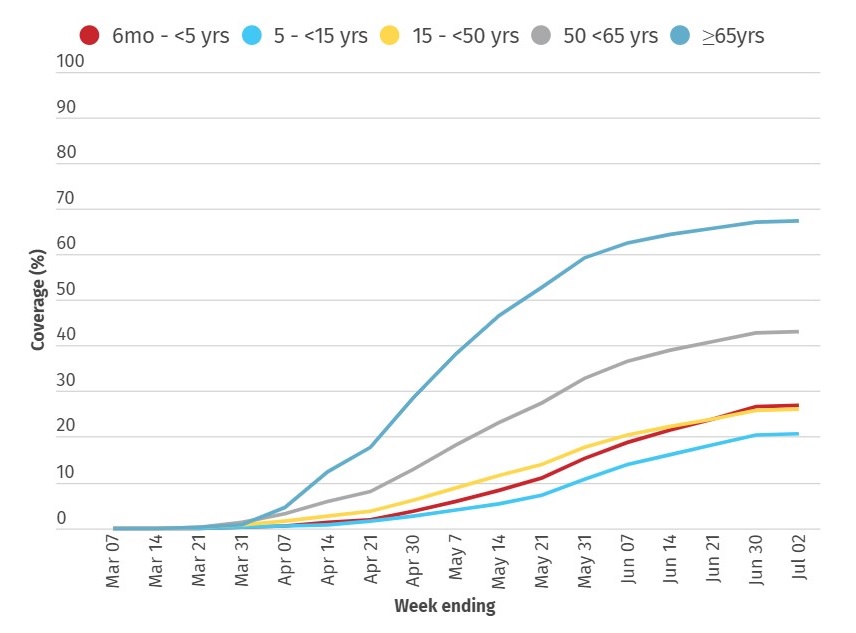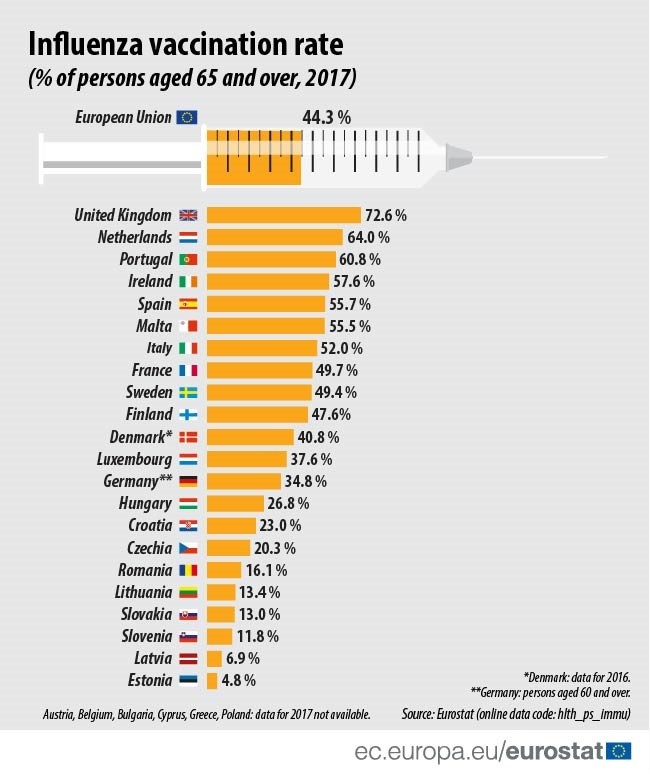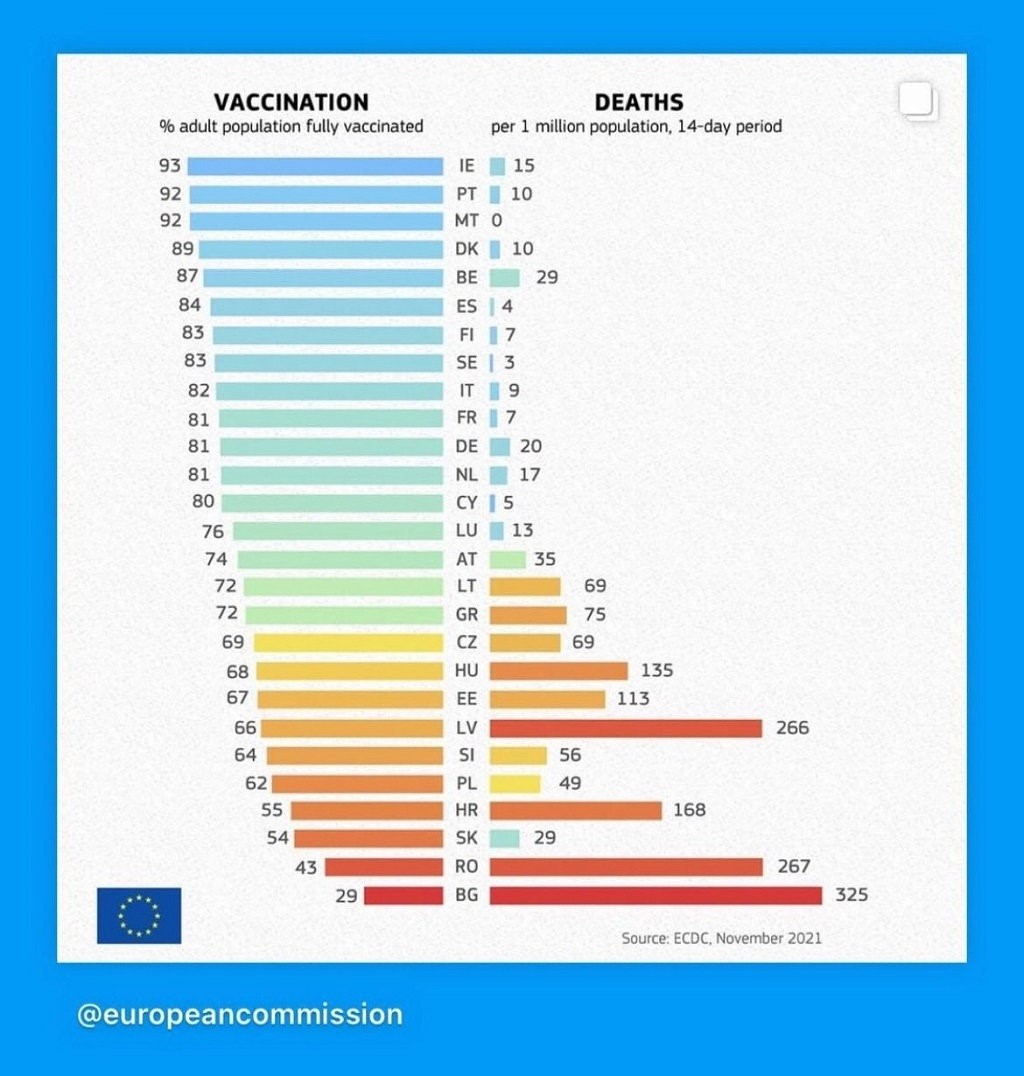Flu is back: Australia had the ‘worst May on record’; workplace sick leave is up 50%; and excitable newspaper headlines tell of celebrities struck down by ‘super flu’. The groups with the highest rates of disease are children aged 5-19, followed by children aged under 5 years, and adolescents.
The question for Europe is whether this is what winter 2022 has in store for us. Australia’s experience suggests countries with low vaccine uptake in younger age groups can expect bigger outbreaks, but there is still time to address this for northern hemisphere countries.
Story highlights
- Flu season started early in Australia in spring 2022
- 150,000 cases have been recorded so far
- 54 deaths recorded since March
- Children and adolescents have the highest numbers of cases
- In Europe vaccination rates among older people are below the 75% target
Dr Catherine King, researcher at the University of Sydney, says young children who were never vaccinated or exposed to flu viruses are bearing the brunt of the outbreak. ‘Australia has had very low levels of circulating influenza viruses during the COVID-19 era, due to border closures, lockdowns and other public health measures,’ she told Vaccines Today. ‘This means that there is limited recent natural immunity to influenza in the community, especially for the cohort of young children born between 2020 and 2022.’

Vaccine uptake among children in Australia was below 10% until cases began to climb in May. Some parents have responded to public health campaigns by ensuring their children are vaccinated. More than 20% of children aged 5-15 years are now vaccinated, while vaccine coverage in children aged six months to 5 years has reached 27%. This is still below the 41% achieved in the same age group in 20202. By far the highest vaccination rates are found in older age cohorts where 67% of people aged over 65 have been vaccinated.
Under Australia’s National Immunisation Program, influenza vaccines are provided for free for children aged six months to five years. While influenza vaccine studies have demonstrated the safety and effectiveness of flu vaccines for children, experts are highlighting the real risks the disease poses to some younger people. An Australian study, conducted in 2017, found that 57% of children hospitalised with influenza had no underlying medical conditions.
‘Influenza can cause severe disease in young children, including previously healthy children,’ says Dr King. ‘Influenza vaccination of young children can not only protect against severe illness in children but may also assist in reducing influenza transmission to other vulnerable populations, such as the elderly.’
What about Europe?
Cases of influenza in Europe were rare during the COVID-19 pandemic. This can be attributed to a combination of factors including social distancing and mask wearing, higher flu vaccination rates, and less data collection on flu.
Warnings that a ‘twindemic’ of COVID-19 and flu circulating simultaneously would cause further spikes in hospitalisation in 2020 and 2021 didn’t materialise. But this year could be different, as societies are likely to be much more open than in the first years of the pandemic.
Vaccination rates
How well Europe copes with the return of flu season will depend partly on the impact of COVID-19 this winter and on protection offered by vaccines. In Australia, authorities say it is too early to tell how well their winter vaccine has reduced infection, illness and hospitalisation. But improving vaccination ahead of Europe’s flu season would be prudent.

Europe’s flu vaccination rates are poor. Despite a 2009 commitment to vaccinate at least 75% of people aged 65 and older, most are not vaccinated. EU data from 2017 shows that just 44% of older people have had their flu vaccine.
There is a clear east-west divide across the continent, with very low rates of uptake in some eastern European countries. Even the best performing countries in Europe missed the target.
The split evident in flu vaccination rates reflects the differences between uptake of COVID-19 vaccines. This points to the wider challenge of improving demand for vaccines across Europe.

It remains to be seen whether the focus on vaccinating older people and other vulnerable groups against COVID-19 will help to increase uptake in those at most risk.
The Australian story is still developing. Europe will have to learn lessons fast.





Pingback
July 13th, 2022
[…] Noch nie wurden in einem Mai mehr Fälle registriert wie 2022, wie es auf der Online-Plattform Vaccines Today heißt: Bis zu 50 Prozent der Angestellten fehlen bei der Arbeit. Seit Beginn der Grippesaison gab […]